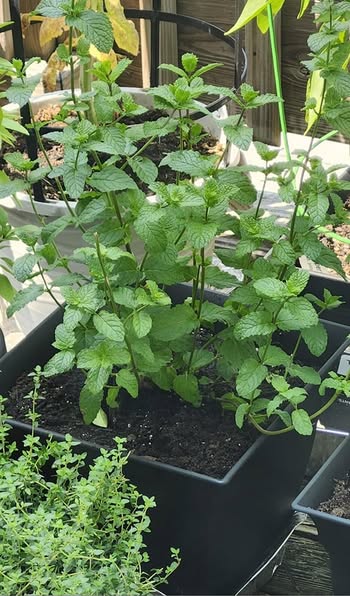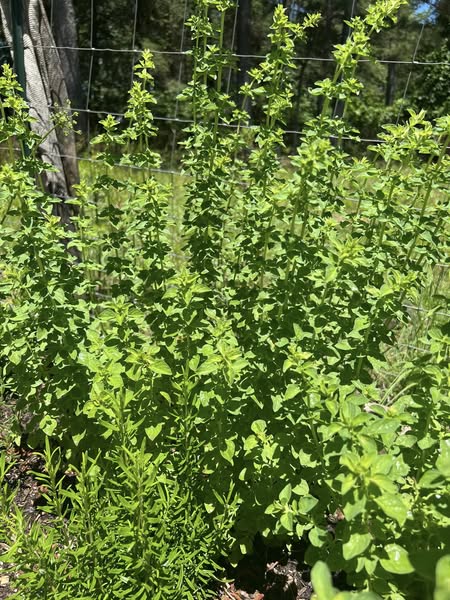As summer’s warmth fades and crisp autumn air rolls in, many gardeners begin preparing for dormancy. But fall isn’t just the end—it can be a fresh beginning, especially for herb lovers. While many think spring is the prime planting season, fall offers its own secret advantages—cooler temperatures, gentler sunlight, and more stable soil moisture. And here’s the best part: you don’t need seeds. You just need a snip.
Growing herbs from cuttings in fall isn’t just possible—it’s incredibly rewarding. Imagine creating an entire windowsill garden from kitchen scraps or a friend’s backyard herb patch. It’s eco-friendly, cost-effective, and surprisingly easy.
But which herbs root reliably from cuttings in the fall? Which thrive in the shorter days and cooler temperatures? Let’s dig into the best herbs to grow from cuttings in fall—and how to do it right.
Why Grow Herbs from Cuttings in Fall?
1. Faster Growth Than Seeds
Cuttings skip the seedling stage and go straight to root development, saving time—especially important as days shorten.
2. Stronger, More Consistent Plants
When propagated from a healthy “mother plant,” cuttings produce identical herbs—no genetic surprises, just guaranteed flavor.
3. Indoor-Friendly Timing
As outdoor gardens slow down, indoor propagation thrives. Many herbs do well on sunny windowsills through fall and even winter.
Best Herbs to Grow from Cuttings in Fall
Not every herb likes being cloned—but these standout varieties do. Here are the top picks for fall propagation:
1. Basil (Ocimum basilicum)

The Kitchen Staple That Refuses to Quit
Though often seen as a summer herb, basil is surprisingly adaptable—especially indoors.
How to grow basil from cuttings in fall:
- Snip a 4–6 inch stem just below a leaf node.
- Remove the lower leaves, leaving only the top two sets.
- Place in water by a sunny window.
- Roots appear in 7–10 days.
- Transplant to soil when roots are 2 inches long.
Pro Tip: Use grow lights if your fall daylight is limited—basil needs 6–8 hours of light.
2. Mint (Mentha spp.)

The Easiest and Most Forgiving Herb You’ll Ever Grow
Mint practically begs to be propagated—it roots quickly and spreads like wildfire (so keep it in a pot!).
How to grow mint from cuttings in fall:
- Take a 3–5 inch stem from a healthy plant.
- Remove the bottom half of the leaves.
- Place in a jar of clean water.
- Roots appear within a week.
- Transfer to a container with well-drained soil.
Varieties to try: Peppermint, spearmint, and chocolate mint all work beautifully.
3. Oregano (Origanum vulgare)

Robust, Woody, and Ready for Fall
Unlike tender herbs, oregano handles cool weather well—even thrives under it.
Steps for oregano cuttings:
- Take a 4-inch cutting from soft new growth.
- Strip lower leaves and dip in rooting hormone (optional but helpful).
- Plant directly into moist potting mix.
- Keep in a warm, bright space.
- Roots form in 10–14 days.
Bonus: Fall cuttings result in a more compact, bushy plant come spring.
4. Rosemary (Rosmarinus officinalis)
Challenging But Worth It
Rosemary cuttings take longer to root than mint or basil, but fall’s mild conditions are ideal for coaxing roots.
How to propagate rosemary in autumn:
- Snip 5–6 inch semi-hardwood stems.
- Strip the bottom 2 inches of leaves.
- Dip the stem in rooting hormone.
- Plant in a moist mix of perlite and peat or coconut coir.
- Cover with a plastic dome or bag to retain humidity.
- Be patient—roots may take 3–4 weeks.
Don’t give up: Once established, rosemary can live for years.
5. Sage (Salvia officinalis)
Earthy, Elegant, and Cold-Tolerant
Fall is the perfect time to start sage indoors for lush spring growth.
How to take sage cuttings:
- Select 4–5 inch softwood tips.
- Remove lower leaves.
- Dip in rooting powder (optional).
- Insert into a moist, well-draining mix.
- Mist daily or cover loosely with plastic.
- Rooting occurs in 2–3 weeks.
Ideal use: Pair your sage with turkey, roasted squash, or infused butter—perfect for fall dishes.
6. Thyme (Thymus vulgaris)
Tiny Leaves, Big Aroma
Thyme is a slow grower from seed, but lightning fast from cuttings.
Fall cutting tips:
- Use 3–4 inch non-flowering stems.
- Remove lower leaves.
- Plant directly into soil or root in water.
- Mist regularly and ensure good airflow.
Fall advantage: Thyme prefers cool, dry air—so autumn’s perfect for rooting.
7. Lemon Balm (Melissa officinalis)
Zesty, Soothing, and Easy to Root
Lemon balm, part of the mint family, behaves just as generously.
How to grow from fall cuttings:
- Cut a 4–6 inch stem from new growth.
- Remove lower leaves.
- Place in water or moist soil.
- Roots in just over a week.
Good to know: It thrives in indirect light—perfect for shorter fall days.
How to Root Herb Cuttings Successfully in Fall
Choose the Right Cuttings
- Always take cuttings from healthy, pest-free parent plants.
- Avoid flowering stems—they don’t root well.
- Use sharp, clean shears to prevent damage.
Water vs. Soil Propagation: Which Works Best?
- Water is easy and transparent—great for basil and mint.
- Soil or a mix (like perlite and peat) is better for woody herbs like rosemary and sage.
Light and Temperature Tips
- Provide at least 6 hours of indirect sunlight or use LED grow lights.
- Keep room temps between 65–75°F (18–24°C).
- Avoid drafts and temperature swings.
Humidity and Covering
- Some herbs root better with humidity.
- Use a plastic bag or propagation dome—but leave a small opening for airflow.
Troubleshooting Common Issues
| Problem | Likely Cause | Solution |
|---|---|---|
| Yellowing leaves | Too much water or low light | Let soil dry, increase light |
| Mold or rot | Poor airflow or overwatering | Remove cover, reduce moisture |
| No root growth after 3 weeks | Cuttings too old or weak | Start fresh with softwood tips |
What’s Next After Rooting?
Once your cuttings have developed strong roots (usually 2–3 inches long), it’s time to:
- Transplant to small pots filled with organic potting soil.
- Gradually harden off if planning to move outdoors in spring.
- Harvest lightly—don’t overpluck young plants.
